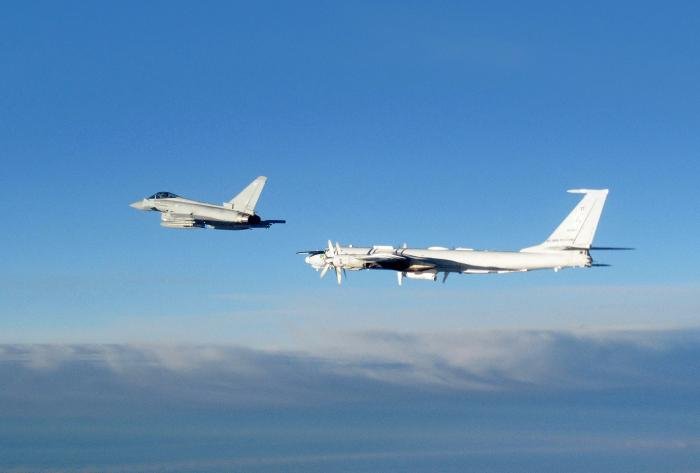The RAF scrambled Typhoon FGR4s on Quick Reaction Alert (QRA) duty at RAF Lossiemouth in Moray, Scotland, to intercept two Russian long-range maritime patrol aircraft – comprising a Tu-142MZ Bear-F (RF-34061/‘54 Red’) and a Tu-142MRM Bear-J (RF-34073/‘17 Red’) – as they transited north of the Shetland Islands on August 14.
The two Bears were drawn from the 5th Independent Anti-Submarine Aviation Squadron; a component of the 2nd Guards Aviation Group, which is based at Kipelovo-Fedotovo Air Base as part of the Russian Navy’s Northern Fleet. While the Tu-142s were flying in international airspace, they were within both the UK’s Flight Information Region (FIR) and NATO’s Northern Air Policing area. Russian military aircraft entering the UK’s FIR can pose a significant hazard to other aircraft since they do not file flight plans, talk to air traffic control or ‘squawk’ (broadcast a transponder code to ensure that they are visible to other airspace users and air traffic controllers on the ground).

The Typhoons were supported by an A330-243MRTT Voyager KC2/KC3 tanker-transport that was scrambled from RAF Brize Norton, Oxfordshire, and remained airborne for the duration of the mission to offer air-to-air refuelling services. This ensured that the multi-role fighters could remain in the air for an extended period to complete their mission, if necessary.
Russia’s Tu-142MZ was manufactured until 1994 and is a dedicated anti-submarine warfare (ASW) and maritime patrol aircraft that is usually armed with up to 12 torpedoes. Its sensors include the radar-based Korshun-KN-N integrated automatic search and targeting system; a Pingvin thermal imager; the Visla-2 towed magnetic anomaly detector (MAD) sensor; an infrared tracker; and a diesel fume sniffer, as well as the fin-mounted MMS-106 Ladoga magnetometer.
The upgraded Tu-142MRM ‘Orel’ or ‘Oryol’ is a VLF-band radio communications relay aircraft designed to communicate with submerged ballistic missile submarines (SSBNs), cruise missile submarines (SSGNs) and nuclear-powered general-purpose attack submarines (SSNs), as well as to support sea-launched cruise missiles. Based on the Bear-F airframe, the Bear-J has a distinctive ventral fairing containing a BLT-5 winch, a GM-40 hydraulic motor, and a 8,000m VLF trailing wire antenna.

